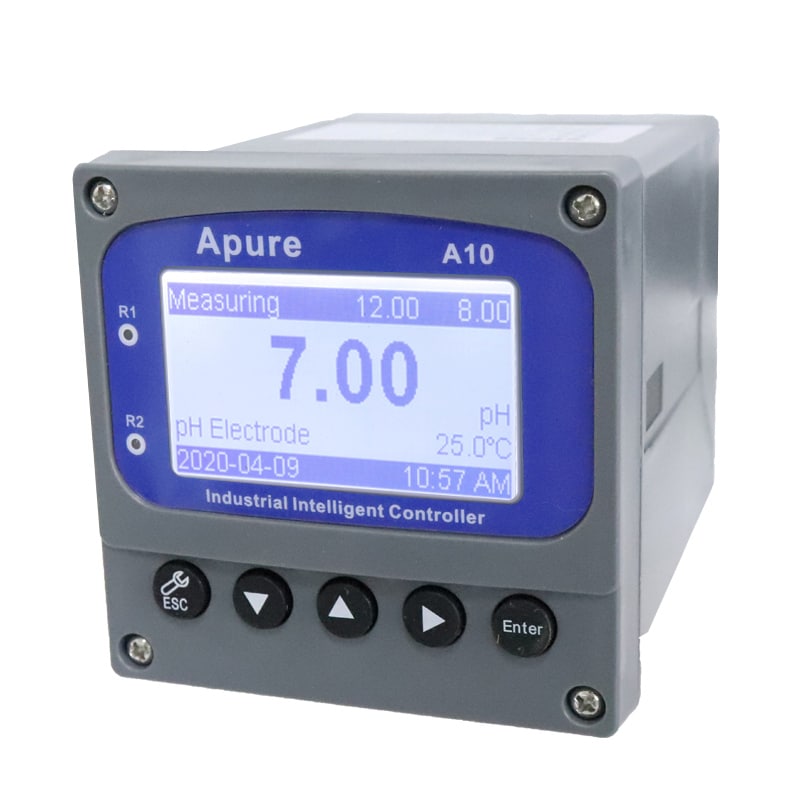One of the most important indicators of water quality test is its pH. pH ranges from 0 to 14 and is used to measure the acidic or alkaline quality of water. pH of 7 is neutral, readings below 7 are acidic, and readings above 7 are alkaline or basic.
Often referred to together with the water quality parameter orp, see What is ORP in water quality testing? This article.
Water quality depends on the proper pH value. For example, in acidic water, toxic heavy metals dissolve easily and are more harmful to organisms. pH levels also affect the availability of essential plant nutrients, with many nutrients less available at pH levels above 7.
pH and drinking water
There is no legally enforceable standard for pH in drinking water because pH is considered to be an aesthetically pleasing water quality. However, the U.S. Environmental Protection Agency (EPA) recommends a pH of between 6.5 and 8.5 for drinking water. Since metals are readily soluble in acidic water, dissolved metals may be present in drinking water at low pH levels. Metals such as iron, manganese, copper and lead can leach into drinking water from pipes or local aquifers.
In acidic water, iron causes a metallic taste and red stains on clothing and pipes, while other metals such as lead are toxic. Alkaline or “hard” water contains excessive amounts of calcium and other minerals, which can cause the scaly deposits common on cookware and the bitter taste of coffee.
pH and Groundwater
Groundwater flows through rocks and soils that can affect the pH of the water. For example, contact with sandstone can result in a pH close to neutral, between 6.5 and 7.5. Limestone, on the other hand, can result in an alkaline pH of 8.5.
Soils contain minerals and other substances that affect the pH of groundwater. The decay of organic matter in the soil causes the pH of groundwater to drop to 4.0, which is well below the recommended pH of 6.5 to 7.5 for drinking water.
Anthropogenic contamination can also affect the pH of groundwater. For example, runoff from shale and coal mining contains iron sulfide, which can cause pH readings as low as 2.
pH and streams and lakes
The pH value in a lake or stream is critical to the survival of fish and aquatic plants. Freshwater lakes and streams typically have pH values between 6.0 and 8.0. Deeper lakes usually have higher pH values near the surface.
Aquatic organisms are sensitive to changes in pH. For example, the optimal pH range for fish is 6.5 to 9.0. At levels outside this range, fish become susceptible to toxic chemicals. pH changes can also lead to an overload of available plant nutrients, resulting in excessive plant growth and reduced oxygen levels for fish. This condition, known as eutrophication, threatens the survival of plants and animals in the water.
Using pH meters for water quality test
Scientists use pH meters to measure the pH level in water. Water quality tests are performed in the field using relatively small portable meters or in the lab using larger benchtop meters. The benchtop meter has a cup that holds the water sample and a glass probe with two specialized electrodes. pH electrodes measure the acidity of the water sample, while the reference electrode is immersed in a liquid with a fixed acidity. After comparing the pH electrode reading with the reference electrode reading, the meter converts the voltage to pH.
The pH meter provides more accurate readings than test paper kits and prevents confusion caused by having to use a dropper. Calibration prior to testing water samples ensures that the pH meter provides accurate readings and test results.
The Importance of pH in Water
Water quality is critical to all living things as well as agricultural and recreational activities. Optimal pH levels are an important factor in maintaining water quality and healthy ecosystems. Accurate pH testing helps keep drinking water and groundwater safe, and helps protect aquatic plants and animals.
Read more about water quality:
What is residual chlorine?
What is ec meter?
What is salinity meter and how does it work?
Water Quality Sensors For Water Treatments



